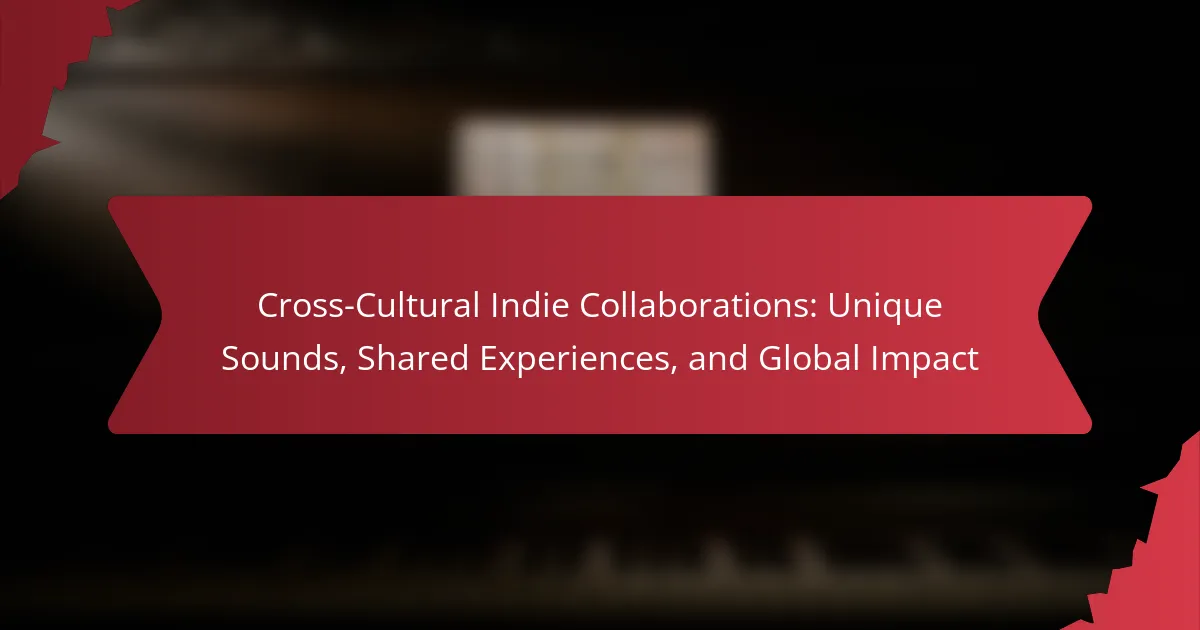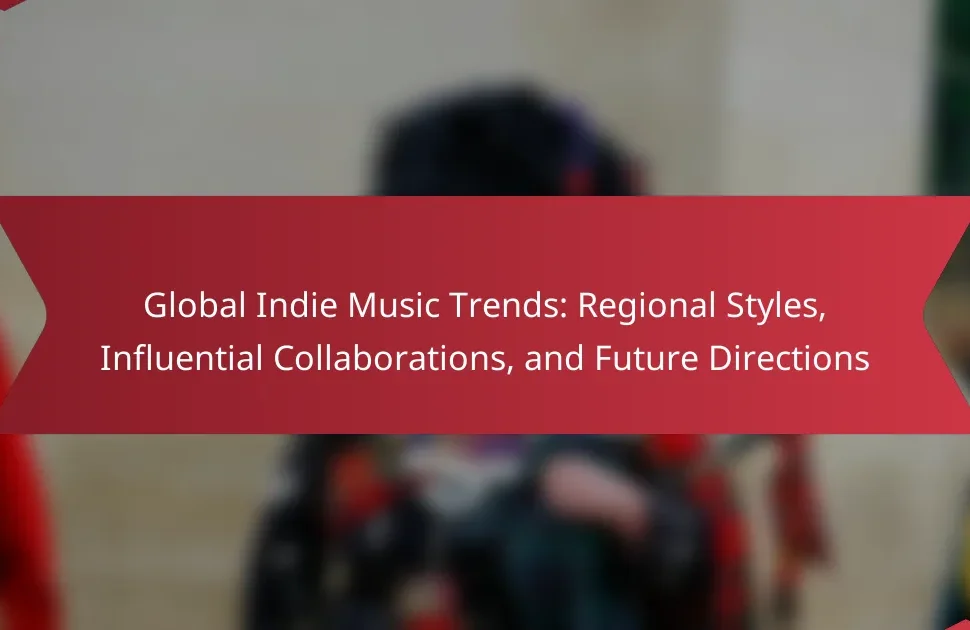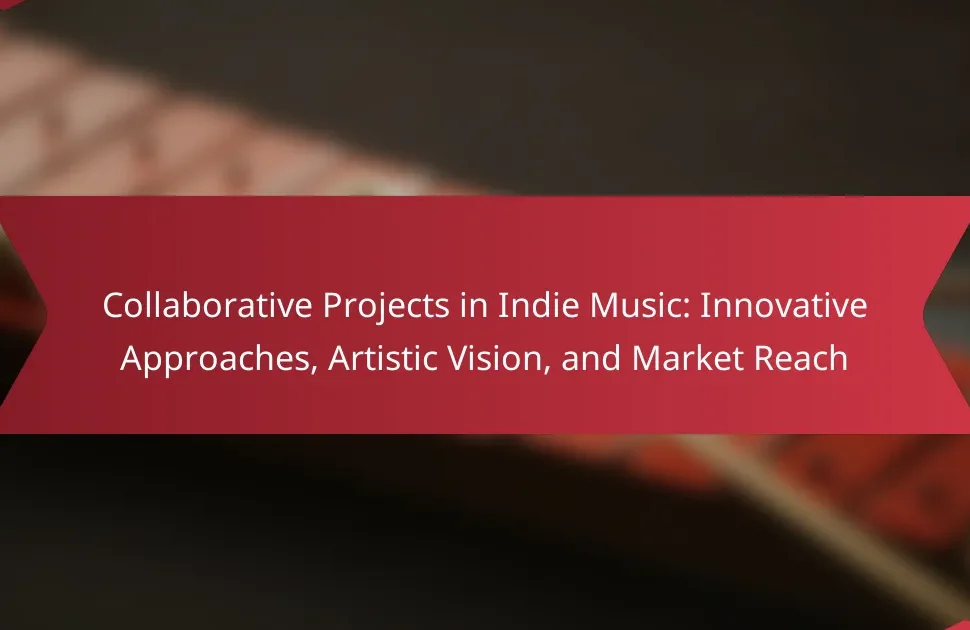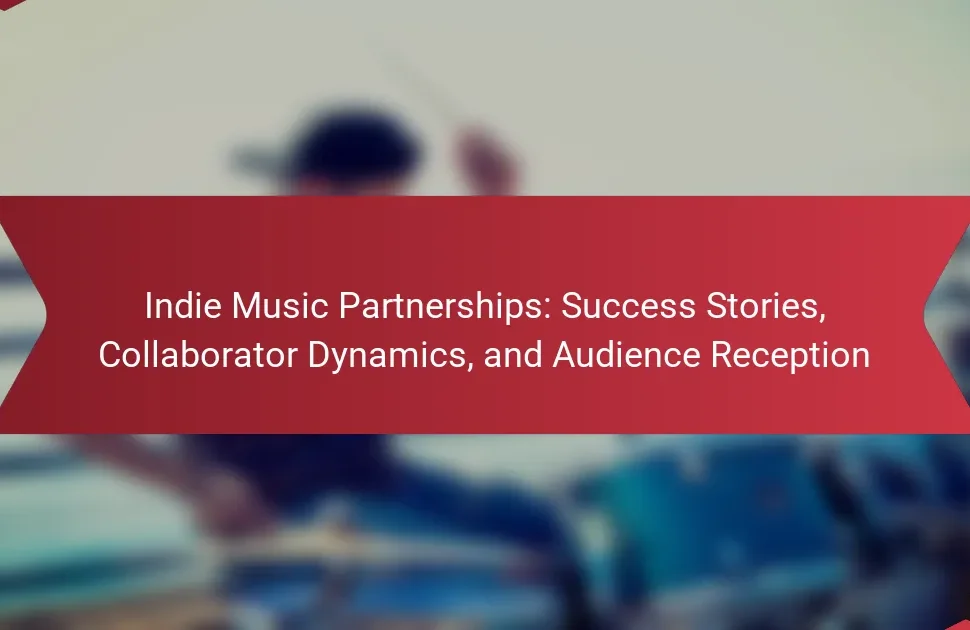Cross-cultural indie collaborations enrich the music landscape by blending diverse cultural influences and fostering shared experiences. These partnerships leverage technology and social media for global connectivity, enabling artists to create unique sounds. Challenges like language barriers and cultural norms require sensitivity and adaptability. Cultural festivals further enhance creativity and collaboration, amplifying the global impact of these musical fusions.

How do cross-cultural indie collaborations enhance musical diversity?
Cross-cultural indie collaborations enhance musical diversity by blending distinct cultural influences, resulting in innovative sounds. These collaborations foster shared experiences among artists, promoting understanding and unity. For example, artists from different backgrounds can combine traditional instruments with modern genres, creating unique musical fusions. This diversity enriches the global music scene, making it more vibrant and inclusive. Such collaborations often lead to new audiences discovering varied musical styles, thus amplifying cultural exchange.
What are the key benefits of cross-cultural musical partnerships?
Cross-cultural musical partnerships foster unique sounds, shared experiences, and global impact. These collaborations enhance creativity by blending diverse musical traditions, resulting in innovative genres. They promote cultural understanding, allowing artists to connect with audiences worldwide. Additionally, they expand market reach, increasing exposure and opportunities for all involved.
Which genres are most commonly fused in these collaborations?
The most commonly fused genres in cross-cultural indie collaborations include folk, electronic, hip-hop, and rock. These genres often blend distinct cultural elements, creating unique sounds that resonate globally. For instance, folk music’s storytelling merges with electronic beats, enhancing emotional depth. Additionally, hip-hop’s rhythm complements rock’s energy, resulting in innovative tracks. This fusion reflects diverse cultural experiences, enriching the indie music landscape.
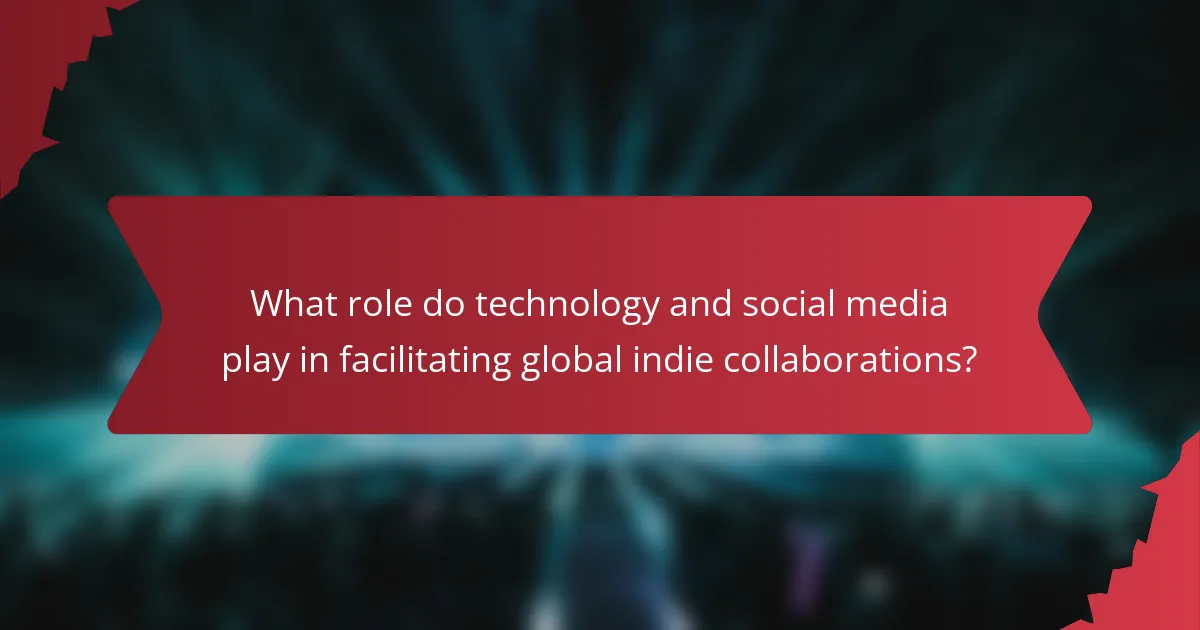
What role do technology and social media play in facilitating global indie collaborations?
Technology and social media significantly enhance global indie collaborations by connecting artists across diverse cultures. They facilitate instant communication, allowing musicians to share ideas and create music together regardless of geographical barriers. Platforms like SoundCloud and Bandcamp enable artists to showcase their work to a global audience, fostering unique sounds and collaborative opportunities. Social media also helps in building communities, where artists can engage with fans and each other, leading to shared experiences and collective growth in the indie music scene.
How are platforms like Bandcamp and SoundCloud influencing indie music collaboration?
Platforms like Bandcamp and SoundCloud foster cross-cultural indie collaborations by connecting diverse artists globally. These platforms enable musicians to share unique sounds and experiences, leading to innovative music that transcends cultural boundaries. For instance, artists from different countries can collaborate on projects, blending genres and styles, which enriches the indie music scene. As a result, these collaborations not only enhance the artists’ reach but also create a global impact, promoting cultural exchange and understanding through music.
Which social media strategies are effective for promoting cross-cultural music projects?
Effective social media strategies for promoting cross-cultural music projects include targeted collaborations, engaging storytelling, and leveraging diverse platforms. Collaborating with local influencers amplifies reach and credibility. Storytelling that highlights cultural narratives fosters emotional connections. Utilizing platforms like Instagram, TikTok, and YouTube enhances visibility and engagement. Cross-promotion across these channels maximizes audience interaction, creating a global impact through shared experiences.
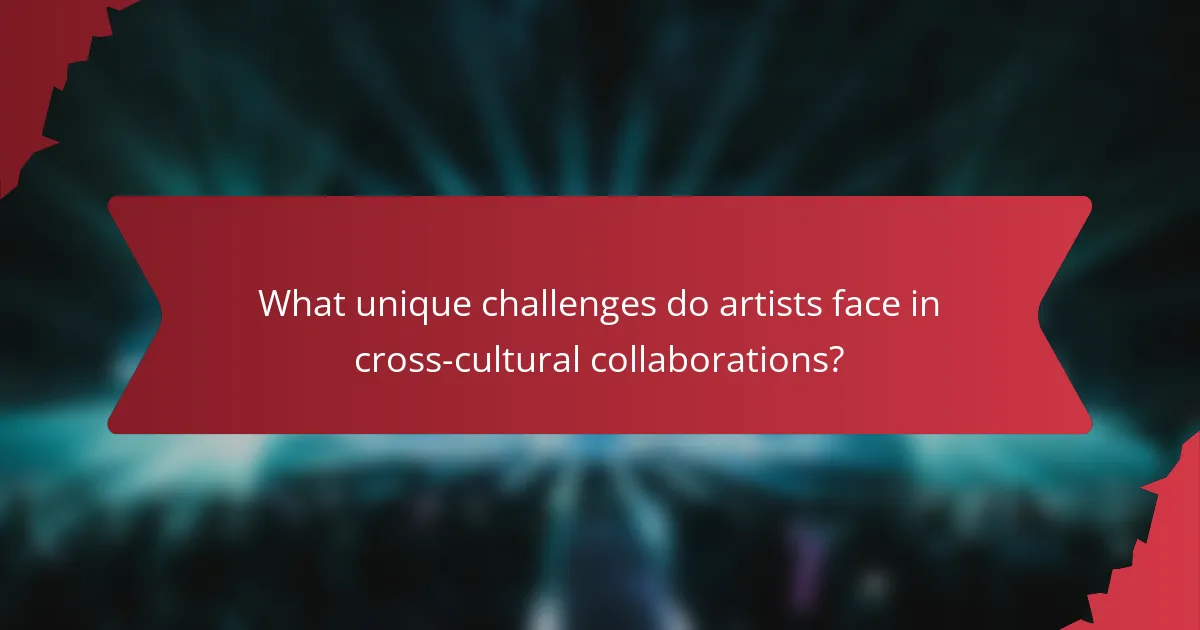
What unique challenges do artists face in cross-cultural collaborations?
Artists in cross-cultural collaborations face unique challenges such as language barriers, differing cultural norms, and varying artistic expectations. These obstacles can hinder communication and creative synergy. Additionally, artists may struggle with identity representation and the risk of cultural appropriation, impacting authenticity. Navigating these complexities requires sensitivity and adaptability to foster meaningful collaboration.
How do language barriers impact the creative process?
Language barriers can hinder communication and collaboration in cross-cultural indie projects. Misunderstandings may arise, affecting creative expression and idea sharing. Diverse languages can limit access to specific cultural nuances, which are essential for authentic collaboration. However, these barriers can also inspire innovative solutions, leading to unique sounds and shared experiences that enhance global impact. Collaborators often find ways to bridge gaps through music, fostering connections that transcend language.
Which cultural sensitivities must be navigated in international music projects?
Navigating cultural sensitivities in international music projects requires understanding diverse musical traditions, values, and communication styles. Collaborators must respect local customs, avoid cultural appropriation, and engage in meaningful dialogue. This fosters trust and enhances creative synergy. Acknowledging unique attributes of each culture, such as traditional instruments or song meanings, enriches the collaboration. Additionally, awareness of rare sensitivities, like historical contexts or political issues, can prevent misunderstandings. Emphasizing shared experiences fosters unity and enhances the global impact of the project.

How do cultural festivals and events support cross-cultural indie collaborations?
Cultural festivals and events significantly enhance cross-cultural indie collaborations by fostering creativity and shared experiences. These gatherings provide a platform for artists from diverse backgrounds to exchange ideas, techniques, and musical styles. Such interactions lead to unique sounds that reflect a blend of cultures, enriching the global music landscape. Additionally, festivals often attract international audiences, amplifying the reach and impact of collaborative works. Through these events, artists build networks that support ongoing partnerships, ultimately contributing to a more interconnected artistic community.
What are some notable festivals that showcase global indie music?
Notable festivals showcasing global indie music include SXSW, Glastonbury, and Primavera Sound. These events celebrate cross-cultural indie collaborations, highlighting unique sounds and shared experiences.
SXSW features diverse acts from around the world, fostering creativity and innovation. Glastonbury offers a platform for emerging artists, emphasizing social and environmental awareness. Primavera Sound is known for its eclectic lineup, merging genres and cultures.
These festivals not only promote indie music but also create a global impact by connecting artists and audiences across borders.
How do these events foster networking among artists from different backgrounds?
Cross-cultural indie collaborations foster networking among artists by creating inclusive environments that encourage interaction. These events enable artists from diverse backgrounds to share unique sounds and experiences, enhancing creativity. Collaborative projects often lead to cross-pollination of ideas, expanding artistic horizons. As a result, artists build lasting relationships that transcend geographical boundaries, amplifying their global impact.
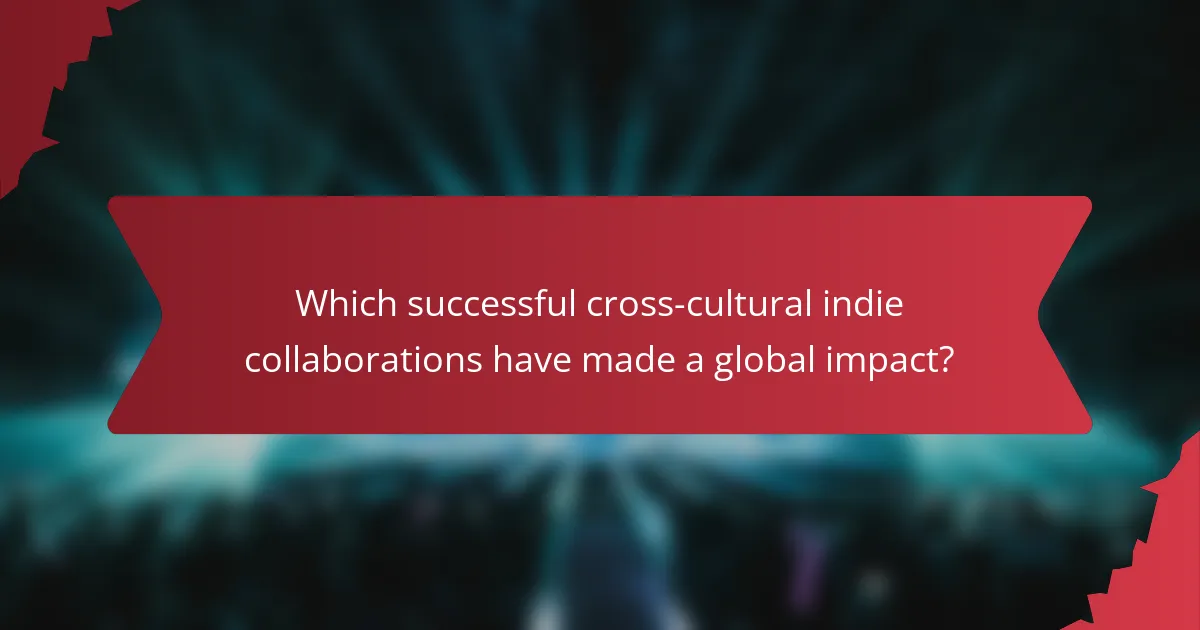
Which successful cross-cultural indie collaborations have made a global impact?
Cross-cultural indie collaborations have significantly shaped global music scenes. Notable examples include:
1. *Bomba Estéreo and Systema Solar* – Their fusion of Colombian cumbia and electronic music has gained international acclaim.
2. *Tinariwen and Nneka* – This collaboration blends Tuareg music with soul, creating a unique sound that resonates globally.
3. *The Very Best* – A partnership between Malawi’s Esau Mwamwaya and British producer Johan Hugo, merging African sounds with Western pop.
4. *Nicolas Jaar and Dave Harrington* – Their project Darkside combines electronic music with psychedelic rock, appealing to diverse audiences.
5. *Sharon Jones & The Dap-Kings and Amy Winehouse* – Their collaboration revitalized the soul genre, connecting audiences across cultures.
These collaborations highlight the power of music to transcend cultural boundaries and create shared experiences.
What are the stories behind landmark collaborations in the indie music scene?
Landmark collaborations in the indie music scene often reflect unique sounds and shared experiences that transcend cultural boundaries. These partnerships create innovative music that resonates globally.
For example, the collaboration between Bon Iver and the Korean artist Yaeji merges folk and electronic sounds, showcasing diverse influences. Another notable partnership is between the British band Alt-J and the Nigerian artist Burna Boy, blending indie rock with Afrobeat rhythms. Such cross-cultural collaborations not only enrich the music landscape but also foster understanding among different cultures.
These collaborations often highlight rare attributes, such as the ability to reach diverse audiences and create a global impact. They demonstrate the power of music as a universal language that connects people across the globe.
How have these projects influenced the broader music industry?
Cross-cultural indie collaborations have significantly shaped the broader music industry by introducing diverse sounds and fostering global connections. These partnerships have expanded musical genres and influenced mainstream trends. Collaborations often blend traditional and contemporary styles, creating unique sonic experiences that resonate with a wider audience. As a result, artists gain exposure to new markets, enhancing their reach and cultural exchange. This phenomenon encourages innovation and experimentation, driving the evolution of music in a globalized landscape.
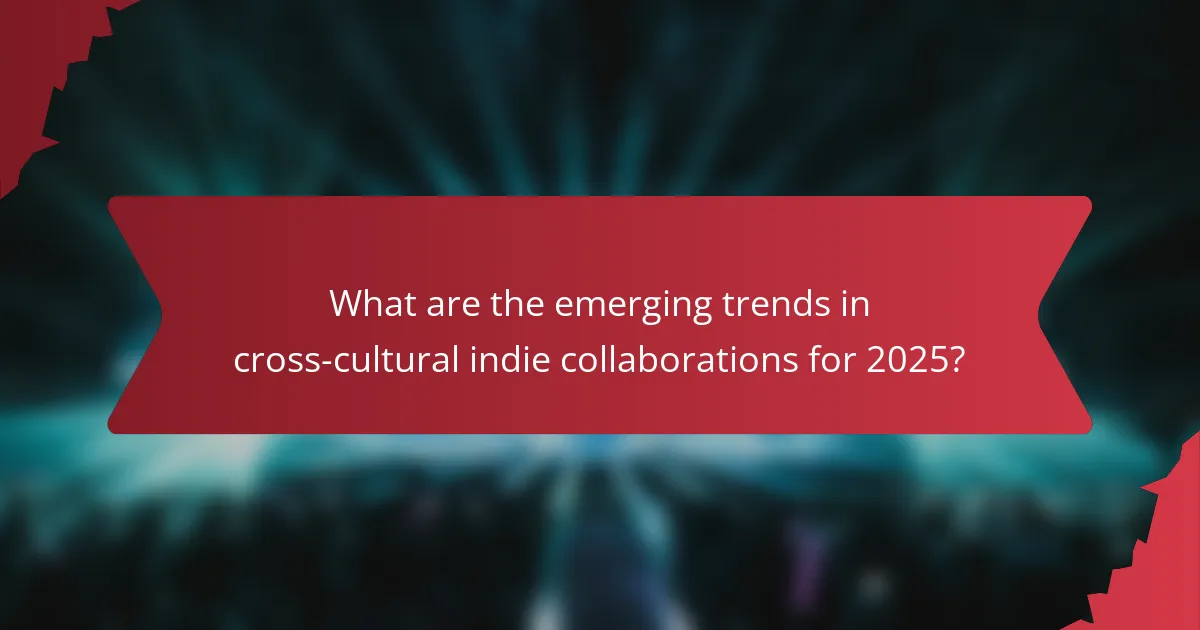
What are the emerging trends in cross-cultural indie collaborations for 2025?
Emerging trends in cross-cultural indie collaborations for 2025 include increased digital connectivity, genre fusion, and social activism. Artists are leveraging technology to collaborate across borders, creating unique sounds that reflect diverse cultural influences. This trend promotes shared experiences and amplifies global impact through music that addresses social issues. Collaborative projects often feature rare attributes, such as blending traditional instruments with modern production techniques, enhancing cultural appreciation. As a result, audiences are increasingly drawn to these innovative collaborations, fostering a sense of community and understanding among different cultures.
Which innovative sounds are expected to shape the future of global indie music?
Cross-cultural indie collaborations are expected to shape the future of global indie music by blending diverse musical traditions and creating unique sounds. These collaborations foster shared experiences that resonate across cultures, enhancing the genre’s global impact. For instance, artists from different backgrounds are increasingly merging genres, leading to innovative soundscapes that reflect a rich tapestry of influences. This trend not only broadens the audience but also encourages cultural exchange and understanding. As a result, the indie music scene will likely see a rise in cross-genre experimentation and collaborations that redefine traditional boundaries.
How are artists leveraging virtual reality and AI in their collaborative efforts?
Artists are using virtual reality and AI to enhance collaboration and create immersive experiences. These technologies enable cross-cultural indie collaborations by facilitating real-time interaction, breaking geographical barriers.
Virtual reality allows artists to create shared spaces where they can experiment with sound and visuals, resulting in unique artistic expressions. AI tools assist in generating new sounds and compositions, offering artists innovative ways to blend their cultural influences.
For instance, AI algorithms can analyze musical styles from different cultures, enabling artists to merge diverse sounds seamlessly. These collaborative efforts not only enrich the artists’ works but also have a global impact, promoting cultural exchange and understanding.
As a result, the combination of virtual reality and AI is transforming the landscape of indie music, fostering creativity and collaboration across borders.
What best practices can artists follow to maximize the success of their cross-cultural collaborations?
Artists can maximize the success of cross-cultural collaborations by prioritizing open communication, mutual respect, and shared creative goals. Establishing clear expectations fosters trust and enhances collaboration.
Engaging in cultural exchange deepens understanding and enriches the creative process. Artists should actively learn about each other’s backgrounds, traditions, and musical styles. This shared knowledge leads to innovative sounds that resonate globally.
Utilizing technology for remote collaboration can expand reach and accessibility. Platforms for sharing ideas and feedback can bridge geographical gaps, allowing artists to collaborate seamlessly regardless of location.
Finally, promoting the collaboration through diverse channels can amplify its impact. Leveraging social media and music platforms can attract wider audiences and celebrate the unique blend of cultural influences in the work.
